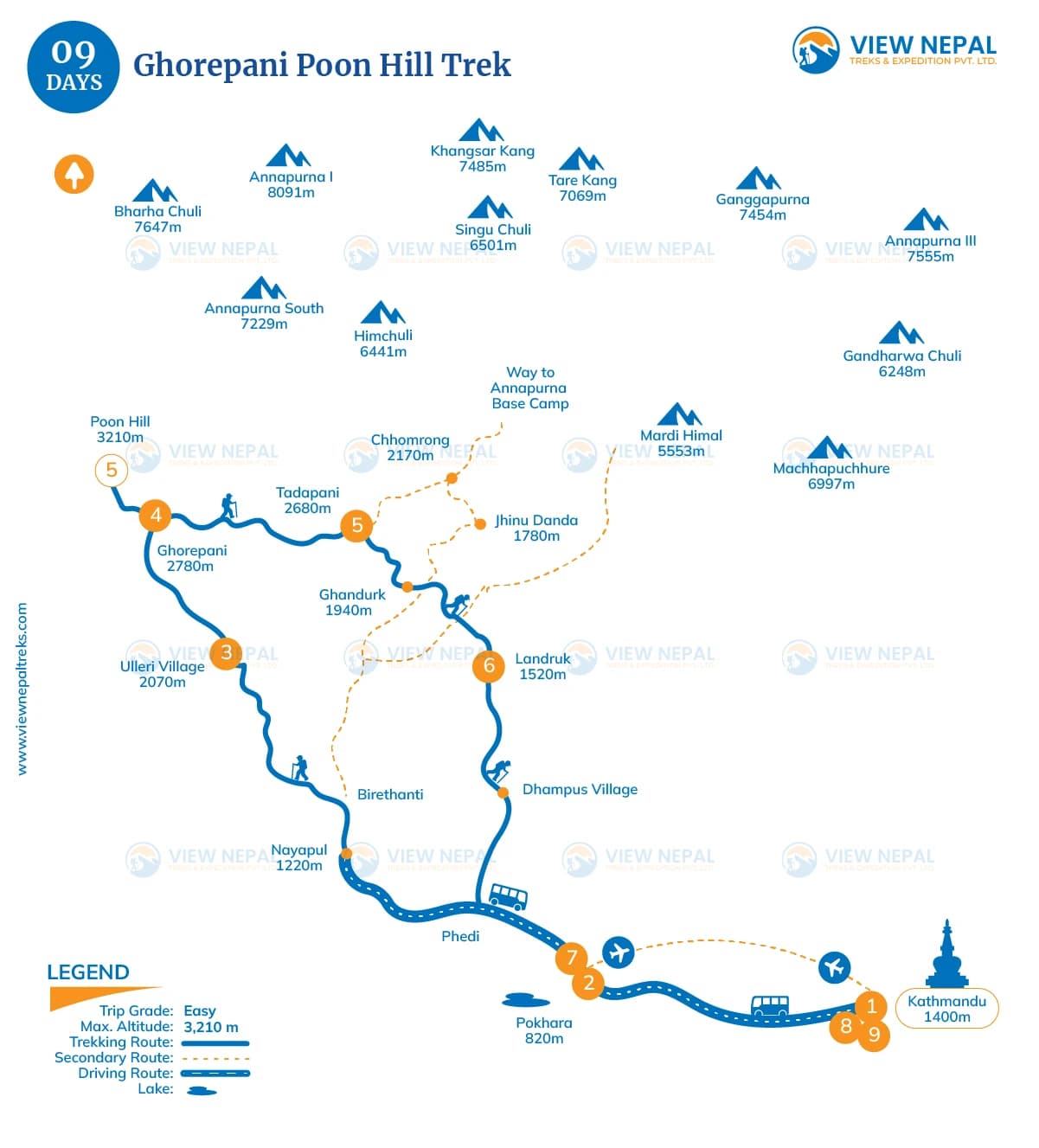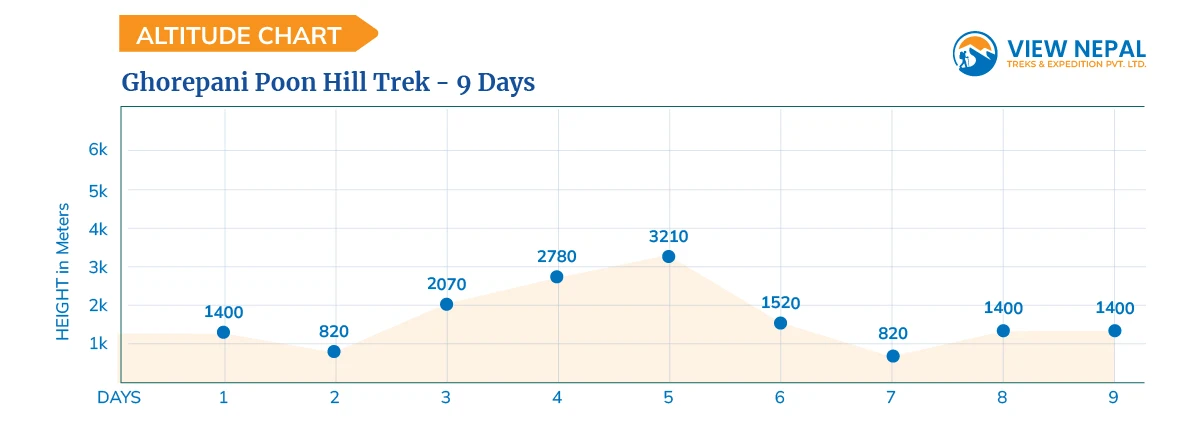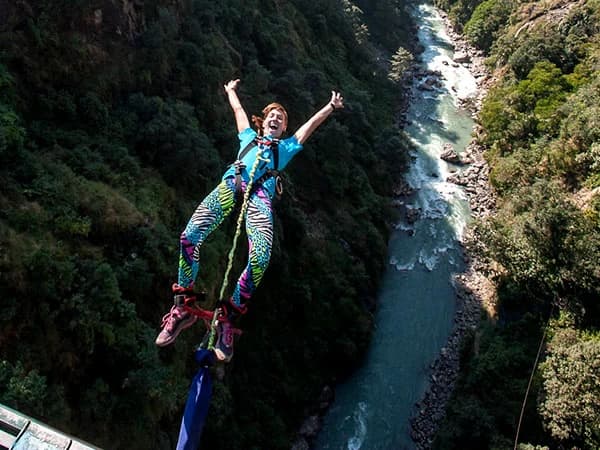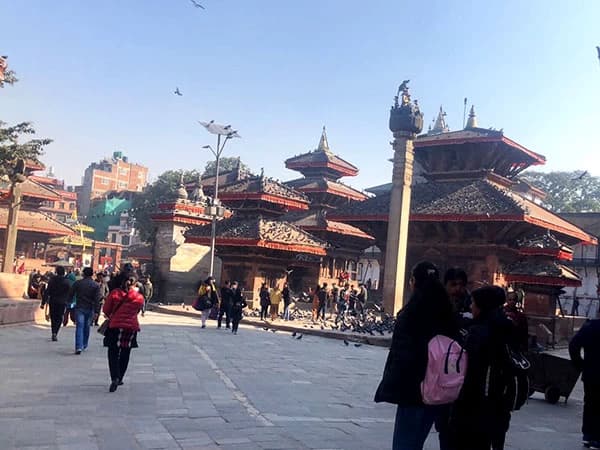Ghorepani Poonhill Trek Overview
The Ghorepani Poon Hill Trek is one of Nepal’s most popular short treks, offering an incredible mix of Himalayan scenery, cultural immersion, and natural beauty over just a few days. Ideal for beginners and experienced trekkers alike, this trek is located in the Annapurna region, providing breathtaking views of some of Nepal’s most iconic peaks.
The highlight of the trek is the sunrise view from Poon Hill, situated at 3,210 meters (10,531 feet). An early morning hike to the viewpoint rewards trekkers with a spectacular panorama of the world’s 10th highest mountain, Annapurna I, and the Dhaulagiri ranges, including peaks like Annapurna South, Hiunchuli, Machapuchare (Fishtail), and Nilgiri. As the sun rises, the snow-capped mountains are painted in hues of pink and gold, creating a magical and unforgettable moment.
The trek passes through traditional villages inhabited by the Gurung and Magar communities, known for their rich cultural heritage and warm hospitality. Villages like Nangethati, Ulleri, Deurali, Hilu, Tadapani, and Ghorepani offer the chance to interact with locals, learn about their customs, and experience their daily life. The friendly hotel stays provide an authentic feel, allowing trekkers to enjoy local foods and traditions along the way.
The Ghorepani Poon Hill trail takes trekkers through lush forests, particularly stunning in spring (March to May) when the rhododendrons are in full bloom. The trail becomes a vibrant display of red, pink, and white blossoms, contrasting beautifully with the surrounding greenery and mountain views. These forests also offer sightings of diverse flora and fauna, making it an appealing trek for nature lovers.
The Ghorepani Poon Hill Trek is relatively short and of moderate difficulty, making it suitable for all ages and experience levels. The trek usually lasts for 4 to 5 days and involves well-established paths with gradual altitude gains, making it an excellent introduction to trekking in Nepal for beginners, families, or those with limited time. It’s a rewarding adventure that doesn’t require prior high-altitude trekking experience.
In addition to the Poon Hill viewpoint, trekkers are treated to panoramic views throughout the journey. The scenic landscapes of terraced fields, cascading rivers, and distant snow-covered peaks provide captivating sights at every turn. The combination of Himalayan peaks and lush valleys makes for picture-perfect views that showcase the natural beauty of the Annapurna Region.
Highlights of the Ghorepani Poonhill Trek
- Witnessing the breathtaking sunrise view looks like painting the Annapurna and Dhaulagiri mountain ranges in vibrant hues from Poon Hill.
- Trek through lush forests bursting with colorful rhododendron blooms, which are especially beautiful during spring. If you go in spring, the rhododendron forests are like walking through a colorful dream.
- Experience the warm hospitality and unique culture of the local Gurung communities in Ghorepani and other villages.
- Capture stunning landscapes, vibrant flora, and traditional villages.
- Perfect for those with limited time, offering a rewarding Himalayan experience in just a few days.
- Visiting Gurung Museum in Ghandruk, where you can see many old settlements of the Gurung community.
Why Ghorepani Poonhill Trek?
The Ghorepani Poon Hill trek in Nepal which lies in Annapurna Region is often considered one of the best treks for several reasons:
The trek offers breathtaking views of the Annapurna and Dhaulagiri mountain ranges, including peaks like Machhapuchhre (Fishtail) and Annapurna. Along the way, you'll encounter charming villages inhabited by Gurung and Magar communities, providing opportunities to immerse yourself in local culture and traditions.
The trek is suitable for trekkers of various fitness levels, making it accessible to beginners. Kids can also hike up easily. This trek can be done by family groups of all ages. The trails are well-maintained, and there are tea houses along the route for accommodations and meals. It's a magical experience that's not to be missed.
Compared to other treks, Ghorepani Poonhill is value for money, where with a minimum budget, you can explore 4 -5 days of trekking.
Overall, the Ghorepani Poon Hill trek combines natural beauty, cultural immersion, and accessibility, making it a top choice for trekkers seeking an unforgettable Himalayan adventure.
Ghorepani Poonhill Trek Cost for 2025
Think of the total cost as a combination of fixed and variable expenses. Fixed costs, like permits (ACAP and TIMS), are essential. These usually run around 50-60 USD total. Then, consider your daily expenses. Teahouse accommodations are basic, costing 5-10 USD per night. Meals, mainly dal bhat, noodles, eggs, and other meal options, average 15-25 USD daily.
The biggest variable is whether you hire a guide and/or porter. For a guide, expect to pay 25-35 USD per day, and for a porter, 15-20 USD. While you can trek independently, a guide enhances your experience with local knowledge and safety.
Transportation to and from Pokhara, the trek's starting point, is another factor. A tourist bus from Kathmandu is the most budget-friendly, around 10-15 USD, while a private jeep is more comfortable but pricier, and flights are much more expensive in comparison to road transportation, which may cost you from 150 -200 USD.
So, for a 5-day trek, budgeting 400-600 USD per person is a reasonable starting point. This estimate includes permits, accommodation, meals, and potentially a guide or porter.
The Mountains seen during the Ghorepani PoonHill Trek
Along the way to Ghorepani Poonhill, you will walk through different villages and lush green forests, where you will be served breathtaking views of dozens of mountains. From the viewpoint of Poonhill, you will see 3 mountains above 8000 meters, including Dhaulagiri I (8,167m), Annapurna I (8,091m), and Manaslu 8,163 meters and other peaks over 6000 meters among them Annapurna South (7,219m), Annapurna II (7,937m), Annapurna III (7,555m), Nilgiri (7,061 meters) Machhapuchhre (Fishtail) (6,993m), Hiunchuli (6,441 meters), Tukuche Peak, Dhampus Peak, Lamjung Himal and, many other.


.webp&w=3840&q=75&dpl=dpl_EiqBnGJVtEAU77Sszo4VoxKYvXf2)
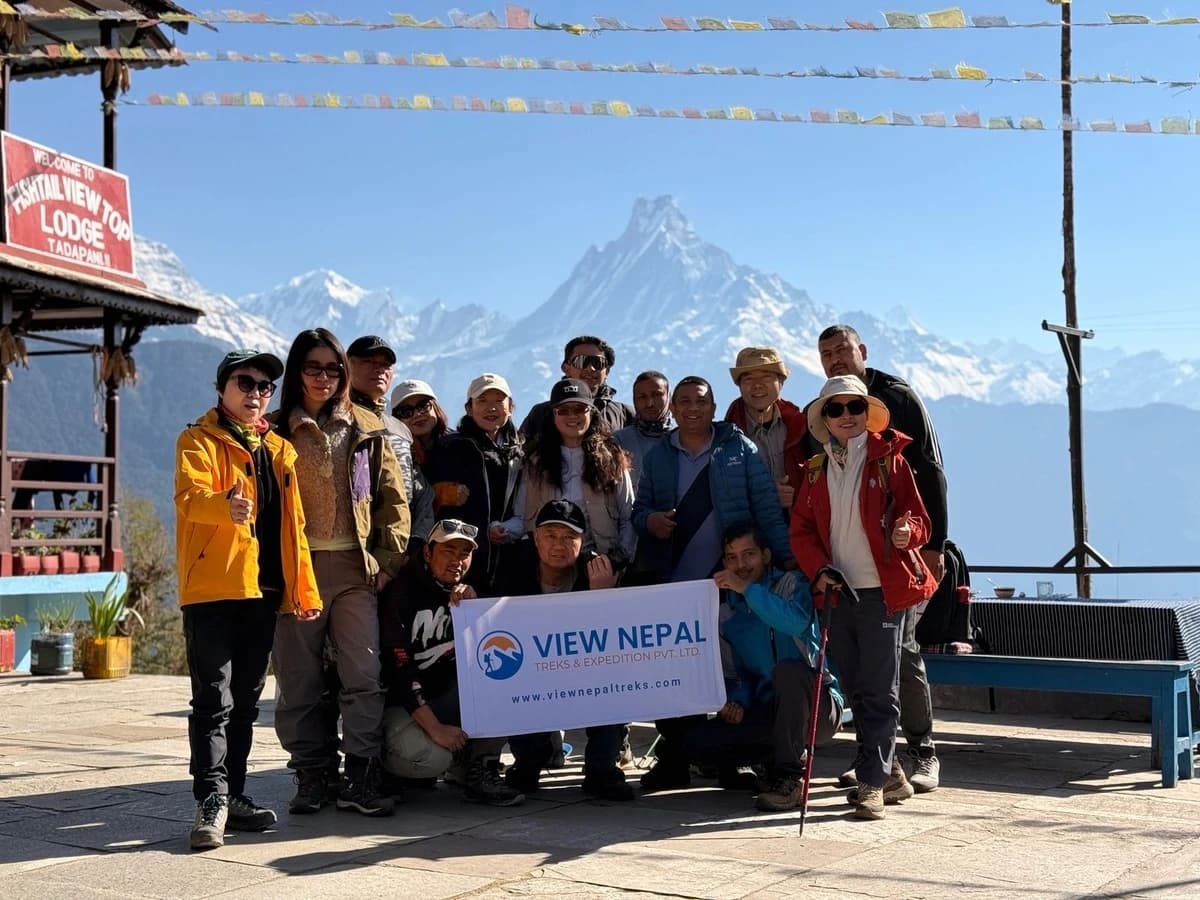
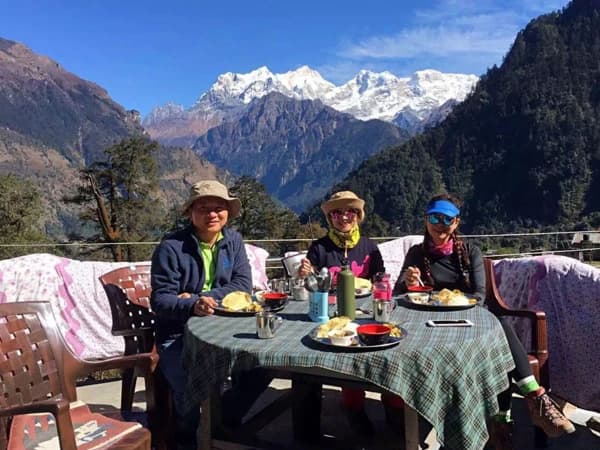
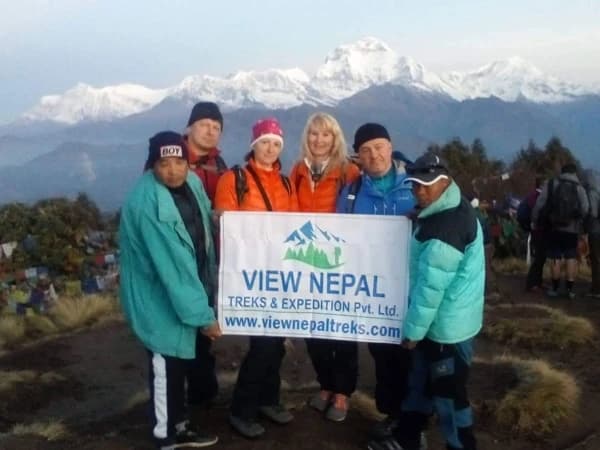
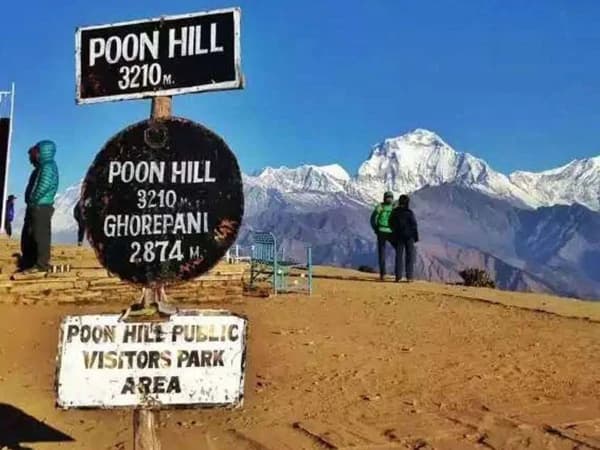
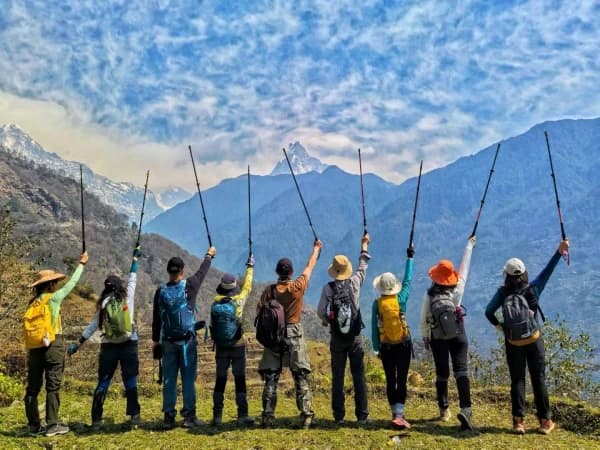
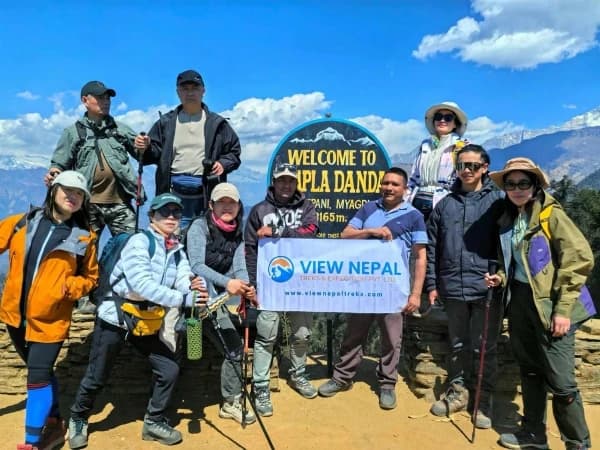
.webp&w=1200&q=75&dpl=dpl_EiqBnGJVtEAU77Sszo4VoxKYvXf2)
.webp&w=1200&q=75&dpl=dpl_EiqBnGJVtEAU77Sszo4VoxKYvXf2)
.webp&w=1200&q=75&dpl=dpl_EiqBnGJVtEAU77Sszo4VoxKYvXf2)
